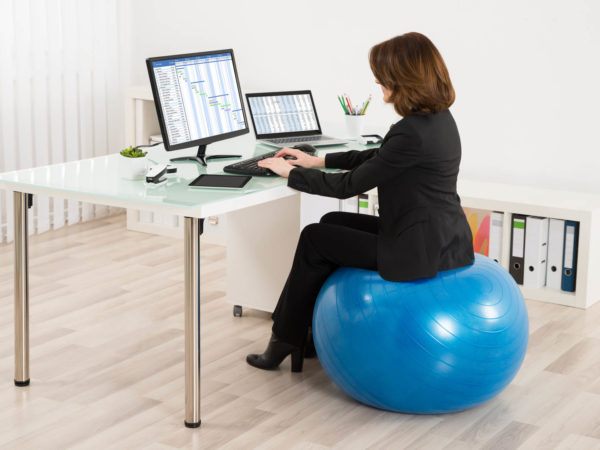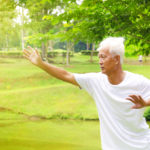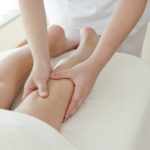Alexander Technique

What is the Alexander Technique?
The Alexander Technique is an education system that aims to improve posture and movement and promote the efficient use of muscles. It was founded in the 1890s by Australian actor Frederick Matthias Alexander, who often experienced laryngitis with the stress of an upcoming performance. After multiple fruitless visits to doctors, he discovered that his symptoms were directly related to excess tension and poor posture, especially in the muscles of his neck. He developed a way of speaking and moving that cured his chronic condition, and then taught these techniques to others for the rest of his life.
The central focus of Alexander Technique is proper positioning of the head and spine by correcting imbalances caused by tension and poor postural habits. The technique focuses on unlearning poor habits of posture, movement, breathing and body orientation, replacing them with fluid movement that is free of tension.
What conditions is Alexander Technique used for?
Alexander Technique is often required for schools of music, dance, and acting, as it retrains individuals to incorporate breathing and body movement for optimum posture and performance. It is thought that proper exertion and movement can create an efficiency of movement that enables performers to have more balance, fluidity and ease.
Those who experience chronic pain, acute muscle strains or chronic tension can also greatly benefit from Alexander Technique by learning to sense muscle tension and then release it through corrective thoughts, breathing and posture.
What should one expect on a visit to a practitioner of Alexander Technique?
Wearing special clothing is unnecessary, although table work may be done and women may prefer comfortable pants over a dress or skirt. The practitioner observes the client in ordinary activities and makes suggestions on ways to retrain habits in order to enhance fluidity and decrease energy expenditure. Gentle hands-on touch may be used so the practitioner can feel movement and patterns of breathing, or guide the client into a posture that releases tension. The client may be asked to perform daily activities that he or she would do in an ordinary day, often including activities that typically cause tension, such as computer work, writing or talking on the telephone.
Alexander Technique is unique among bodywork therapies in that it does not generally consist of routine exercises – instead, guidance is individualized to fit each person’s unique needs. Two exceptions are a special method of lying down as a means of achieving deep muscular relaxation, and a “Whispered Ah” vocalization technique used to promote efficient use of the voice.
The sessions are usually under an hour, with brief discussions afterwards regarding a home-care program. Group sessions may be offered, but individualized therapy is much more common. Frequent sessions are often recommended initially while muscles are being re-trained and habits are unlearned.
Are there any side effects or circumstances where Alexander Technique should be avoided?
This therapy is not physically taxing. The gentleness of Alexander Technique makes it applicable to all individuals and conditions, especially related to pain, stress or improper movement. Anytime table work is performed, the practitioner should allow time for the client to sit up, get a few sips of water and find their center of gravity before standing, since lightheadedness may occur. Individuals with heart disease, breathing difficulties, high or low blood pressure or instability should inform the practitioner of their issues and move slowly and gradually through the technique.
Is there a governing body that oversees or credentials practitioners in therapy Alexander Technique?
The American Society for the Alexander Technique (AmSAT) is a professional organization in the United States that certifies instructors of the Alexander Technique. They are affiliated with several international societies (ATAS: Alexander Technique Affiliated Societies) which conduct training, maintain standards and certification worldwide. Requirements for membership include a minimum of three years’ training in courses approved by AmSAT. Continuing education is also required to retain membership. Their website, www.amsatonline.org, offers resources, membership information, and upcoming training as well as a search engine for finding approved teachers.
How does one get in touch with a practitioner?
The website www.worldwidehealthcenter.net has a directory of practitioners with details on their credentialing and education. In addition, the Alexander Technique home page – www.alexandertechnique.com – along with AmSAT can provide information on finding teachers and practitioners of this therapy.
Are there other therapies that might work well in conjunction with Alexander Technique?
There is evidence that this therapy is beneficial in conjunction with physical therapy, massage, osteopathy, chiropractic and acupuncture. Because Alexander Technique focuses on body alignment and posture, it can be useful with any type of massage or manipulation. Pilates and yoga also focus on core strength, flexibility and body alignment and can easily complement the Alexander Technique. Mind-body therapies also go hand-in-hand with this as both address how thoughts affect physical states.
What is Dr. Weil’s opinion of Alexander Technique?
Dr. Weil is a proponent of good body posture and alignment. He believes that chronic pain often stems from habits of poor posture and movement, and may be significantly relieved with this type of therapy. He cautions that with any acute injury, especially of the head or neck, it is best to be checked and cleared by your physician before beginning any type of rehabilitation or physical therapy.









